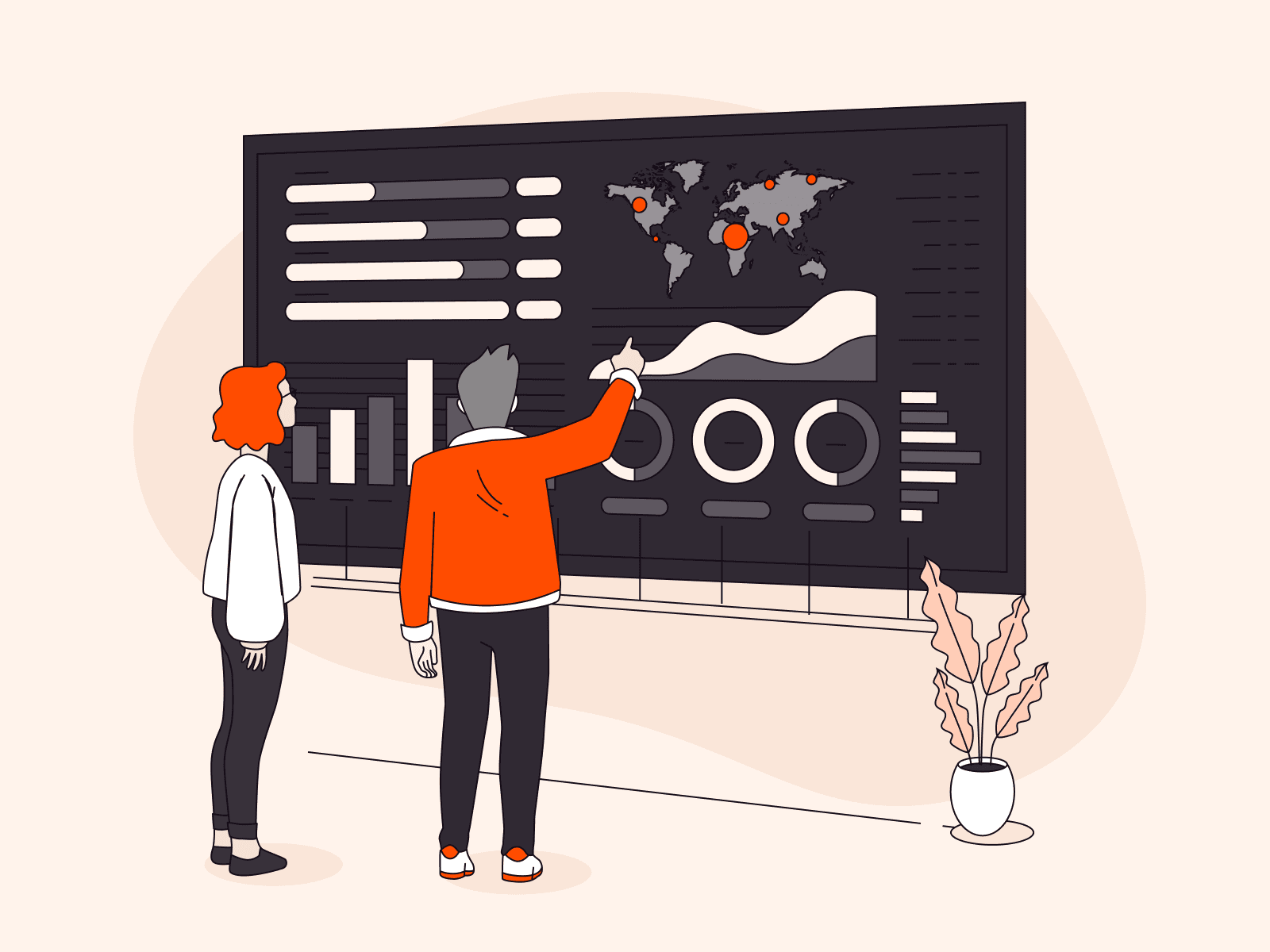How and why hackers successfully breach major companies, and what you can do to protect yourself
- December 19, 2024
- 5 min read

As if businesses didn’t have enough cybersecurity concerns to worry about, over the last six months a ransomware group known as Brain Cipher has emerged as a serious threat to some of the world’s largest organizations, hacking into systems and stealing data from targets including governments, consulting firms, and even the Summer Olympics. To add insult to injury, the group blames the victims themselves for the infractions, leaving their targets red-faced, exposed, and backed into a corner.
Why are even the most well-funded and security-conscious companies vulnerable? More importantly, how can your business apply these lessons to build a stronger cybersecurity posture?
How attackers carry out data breaches against even the biggest companies
Many assume that industry giants are too secure to be breached. But even firms with massive security budgets face significant risks and can leave their customers’ data exposed to theft.
Cyberattackers aim to target any weak point in a company’s system. Hacks usually happen when a company has left some aspect of its digital resources unprotected. This can even happen to firms with the largest security budgets if a part of their system is not actively secured and regularly updated. For example, if an API is unmonitored or improperly documented, attackers can exploit these vulnerabilities and access sensitive data. Read our article to learn more about what data breaches are and how they happen.
Large companies make attractive hacking targets for a number of reasons. Attackers know that these firms have deep pockets and therefore, there is the potential for a huge payout in return for their silence. Hackers also know how much damage cyberattacks can cause to the reputations of large prestigious firms, making the company more likely to pay up to protect its image and prevent loss of customer trust.
Hackers also simply love attention: seeing the name of their ransomware group in the news—particularly if they have managed to bypass the security systems of a consulting firm or other supposed “secure fortress”—gives them credibility in the hackers’ world.

3 steps for every business to take against data breaches
Adopting these proven strategies can help mitigate risks and reduce the impact of potential breaches.
1. Adopt zero-trust security
Trust no user, device, or application by default—even those within your network. A Zero-Trust approach continuously verifies access requests, applying the principle of least privilege to limit what users can access. Implement multi-factor authentication (MFA) to add an extra layer of security, making stolen credentials less effective. Regularly review permissions and remove access for inactive accounts to reduce the attack surface.
Pro tip: Use AI-powered access management systems that monitor user behavior and flag unusual login attempts.
2. Use WAAP to prevent attacks
As cyberattacks become increasingly sophisticated, even large companies with substantial budgets need to be mindful of the robustness of their security setups.
WAAP—short for web application and API protection—is a tool that prevents data breaches for companies of all sizes by acting as a barrier between a company’s digital resources and potential hacking attempts, such as DDoS attacks. Comprising WAF, bot management, L7 DDoS protection, and API security, WAAP can detect unusual activity, mitigate and block suspicious requests, and constantly evolve to deal with new cyber threats and methods. WAAP scales in relation to business size and needs as a company’s digital presence grows.
Leverage AI-powered cybersecurity
As cyber threats grow more sophisticated, leveraging AI-powered WAAP is no longer optional—it’s essential. AI-driven systems can detect, analyze, and respond to threats faster than traditional tools by processing vast amounts of data in real time. Use AI-powered threat detection platforms that can identify unusual behavior, flag potential breaches, and trigger automatic responses before damage is done. Incorporate AI into areas like endpoint security, cloud monitoring, and identity management to create a more adaptive and responsive security environment.
Pro tip: Invest in managed security services that include AI-driven monitoring and threat intelligence to get 24/7, futureproof protection without overwhelming your internal IT team.
3. Apply secondary measures
Zero-trust security and AI-enabled WAAP are the gold standard for preventing data breaches. It’s always best to stop an attack at your organization’s perimeter and deny attackers access rather than deal with an attack once it’s already in.

With that said, if you’re still working to implement WAAP and zero-trust or looking to create additional layers of security in case of a breach, it’s a good idea to work on the five-item checklist below. These techniques will limit the damage that a successful attack can cause.
- Secure your cloud infrastructure: Cloud environments store valuable data but are vulnerable to misconfigurations and unauthorized access. Use security tools that continuously monitor for misconfigurations, ensure encryption of data both in transit and at rest, and enforce strict identity and access controls. Regularly audit cloud permissions to prevent privilege creep and apply automated policies to remediate common vulnerabilities. Pro tip: Deploy cloud security posture management (CSPM) tools to automate threat detection and compliance checks.
- Strengthen endpoint protection: With hybrid work becoming the norm, endpoints such as laptops, mobile devices, and IoT devices are prime targets for attackers. Deploy Endpoint Detection and Response (EDR) solutions to monitor, detect, and block threats in real time. Check that devices are running the latest operating system versions and that endpoint firewalls are active. Consider enabling remote wipe functionality to protect data on lost or stolen devices. Pro tip: Use AI-powered endpoint protection that can analyze and respond to emerging threats with minimal manual input.
- Prepare a strong incident response plan: A clear incident response plan minimizes the damage caused by data breaches and accelerates recovery. Establish a dedicated incident response team and define roles and responsibilities for key staff. Create a step-by-step playbook that covers threat detection, containment, eradication, and recovery processes. Test your incident response plan regularly through simulated breaches or tabletop exercises to identify gaps. Pro tip: Use automated incident response platforms that enable faster threat containment by triggering predefined actions when suspicious behavior is detected.
- Assess third-party security practices: Vendors and service providers can be weak links in your security chain if their systems are compromised. Perform due diligence before onboarding third-party vendors by evaluating their security certifications, policies, and compliance standards. Include clear data protection and breach notification clauses in contracts. Regularly review vendors’ cybersecurity postures through audits, questionnaires, or penetration testing. Pro tip: Use vendor risk management platforms powered by AI to continuously assess the security health of all third-party vendors in real time.
- Train and educate employees: Employees are often the first line of defense against cyber threats. Conduct regular cybersecurity training sessions covering topics such as phishing, social engineering, password security, and remote work best practices. Use real-world attack simulations, such as simulated phishing campaigns, to test employees’ responses and reinforce key lessons. Reward positive behavior and follow up with targeted training for those who fail tests. Pro tip: Use AI-driven phishing simulators that generate tailored, realistic phishing attempts to train employees on emerging scams.
Protect your business from data breaches with Gcore
Data breaches are a huge risk to companies of all sizes and all it takes is one small, unnoticed vulnerability for hackers to break in and access sensitive information. The costs for businesses are immense: loss of customers, trust, reputation, and profit. Multiple layers of protection are necessary to provide both initial gatekeeping to stop attacks and secondary measures in case of a successful breach.
While hackers constantly evolve to unleash new forms of cyberattacks, there are reliable ways to prevent them and keep your business safe and secure. Gcore WAAP is a comprehensive web application and API security solution that protects against multiple cybersecurity threats, including zero-day vulnerabilities, L7 DDoS attacks, and bad bots. Get in touch to learn more about how we can help protect your business from even the most sophisticated and powerful attacks.
Related articles
Subscribe to our newsletter
Get the latest industry trends, exclusive insights, and Gcore updates delivered straight to your inbox.






